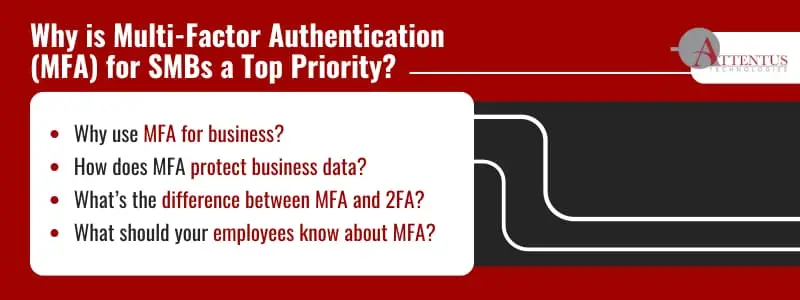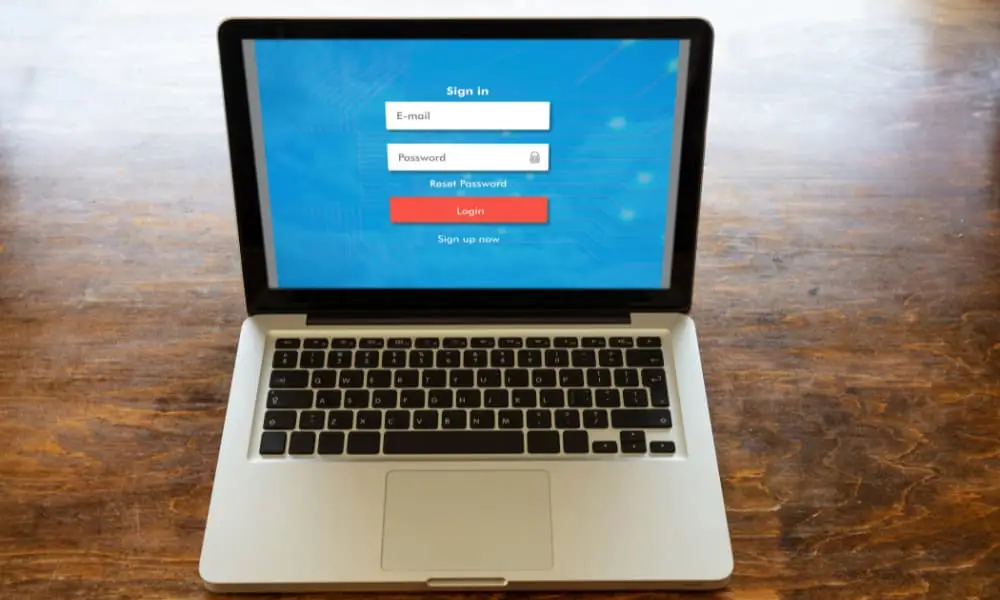Billions of credentials continue to leak on the dark web, and password reuse is at a staggering 73%. SMB owners must move beyond legacy verification and authentication strategies to effectively protect business data.

Did you know that threat actors leaked more than 100 billion stolen credentials on the dark web in 2024? If any belong to your employees, attackers could use those credentials to access your company systems and data.
That’s why you need to integrate additional layers of security. One of the most effective is multi-factor authentication (MFA) for SMBs, which thwarts up to 99.9% of automated attacks.
Why Usernames and Passwords Are No Longer Enough
SMBs have traditionally used usernames and passwords to protect their organizations. This playbook sufficed in the beginning, but it is woefully inadequate in a cybersecurity landscape where threat actors use advanced technologies like artificial intelligence (AI) to accelerate and scale attacks.
One main issue is that usernames and passwords can be easy for a hacker to figure out. Usernames are often either someone’s first initial and last name, their first name and last name, or simply their email address, for example. Once a hacker has a username, they just need to get the password.
Recent studies suggest that people have an average of around 100 passwords, so many choose to use the same password (or variations of it) for everything. 73% of people use duplicate passwords across personal and work accounts, according to the University of California, Berkeley.
Here’s a hypothetical scenario:
Jane Doe, one of your employees, uses the same password for her work, Facebook, and Gmail accounts. She also uses the same username on all three, as highlighted below:
| Work Account | Gmail | ||
| Username | jdoe@yourbusiness.com | jdoe@facebook.com | jdoe@gmail.com |
| Password | Password321! | Password321! | Password321! |
A hacker who breaches Facebook or Gmail and steals hundreds of thousands of passwords, one of which is Jane’s, may use it to attempt to gain access to her work email.
They can then use her account to gain access to company data, encrypt that data, and hold it for ransom. Or they could impersonate Jane to compromise other user accounts within the organization.
Scenarios like these are more common than you might think.
As recently as June 2025, data breaches exposed 16 billion credentials of Google, Facebook, Apple, and even government platforms. Many of these credentials were released on the dark web and are now being used in automated attacks.
Here’s what you can do to protect your business:
- First, require employees to use strong passwords. The less complex the password, the easier it is to compromise.
- Caution them against password reuse across work and personal accounts. Recommend unique passwords for each account.
- Encourage your employees to change passwords regularly.
- Use MFA to ensure your organization stays protected if credentials are compromised.
Let’s explore more details about the advantages of MFA for SMBs.
How MFA Protects Business Data
Multi-factor authentication for SMBs prompts users for a second factor of authentication when they sign into an account. It works by requiring two or more of the following authentication methods:
- Something a user knows, such as a username and password
- Who they are, such as biometrics, fingerprints, or a face scan
- A trusted device, such as a phone or a hardware key the user has that is not easily duplicated
The user provides their username and password in the client application, then a prompt appears on their mobile phone to approve or deny the sign-in. If the user clicks “approve,” they’re allowed access to the work account.
But if they click “deny,” the sign-in session fails and is revoked. This ensures everyone accessing business data in your digital estate is a legitimate user.

Two-factor authentication (2FA) can also help here. It requires two forms of verification, typically a user’s password and a code sent to their phone.. There’s a higher level of security with MFA because it combines more factors, though, and that makes it much harder for threat actors to compromise your organization.
Educating Employees on MFA for SMBs
MFA implementation maximizes value in SMB cybersecurity best practices. That’s why it’s critical to ensure everyone on your team knows:
- What MFA in cybersecurity means.
- Why they should not approve access if they are not currently attempting to log into their accounts.
- That an MFA prompt on their mobile device when they are not currently trying to sign into their account could mean their password has been compromised.
- That they should immediately change their password and reach out to your I.T. department for further investigation if they suspect credentials are compromised.
Multi-factor authentication for SMBs is the new standard of protecting user accounts. Many business owners have achieved peace of mind by adding it to their toolkit, and you too can with expert help from Attentus Technologies.
One of our core values is to “deliver exceptional results,” which is reflected in our average 10-year retention rate and 97.5% customer satisfaction rating over the last 20 years. We can help you effectively implement MFA and train your users about these and other cybersecurity best practices.
Contact us to get started.
